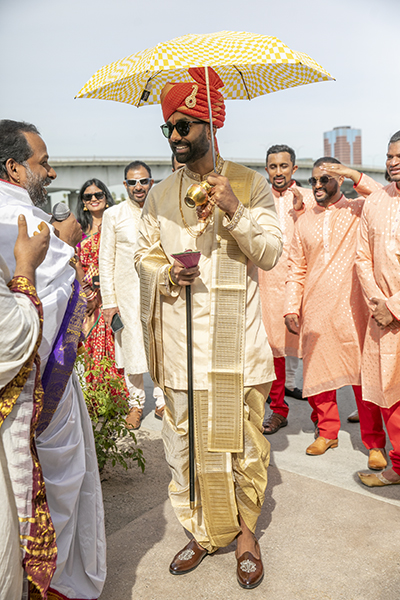 Kashi Yatra is a traditional ritual that is part of some South Indian Hindu weddings. It is a symbolic gesture where the groom pretends to embark on a journey to the holy city of Kashi (Varanasi) to pursue a life of spirituality and renunciation. The purpose of this ritual is to test the groom’s determination and commitment to a married life.
Kashi Yatra is a traditional ritual that is part of some South Indian Hindu weddings. It is a symbolic gesture where the groom pretends to embark on a journey to the holy city of Kashi (Varanasi) to pursue a life of spirituality and renunciation. The purpose of this ritual is to test the groom’s determination and commitment to a married life.
During the Kashi Yatra, the groom is typically dressed in traditional attire and carries a walking stick, umbrella, and a small bag or pouch with him. He acts as if he is leaving the wedding ceremony and the responsibilities of married life behind to pursue a life of asceticism.
The bride’s father or other close family members play a significant role in the ritual. They approach the groom and persuade him to reconsider his decision and choose the path of marriage and family life instead. They offer assurances of their daughter’s love, support, and companionship, urging him to return and fulfill his duties as a husband.
At this point, the groom realizes the importance of married life and agrees to abandon his plan of going to Kashi. He accepts the bride’s hand in marriage, and the wedding ceremonies proceed.
The Kashi Yatra ritual is often accompanied by playful banter, songs, and sometimes even lighthearted drama. It adds an element of joy and excitement to the wedding festivities and serves as a symbolic reminder of the groom’s readiness to embrace his responsibilities as a husband and participate in family life.
It’s important to note that the Kashi Yatra ritual is not performed in all South Indian weddings and may vary based on regional customs and individual family traditions. It is a unique and cultural element specific to certain communities and serves as a symbolic representation of the groom’s commitment to marriage and family.




